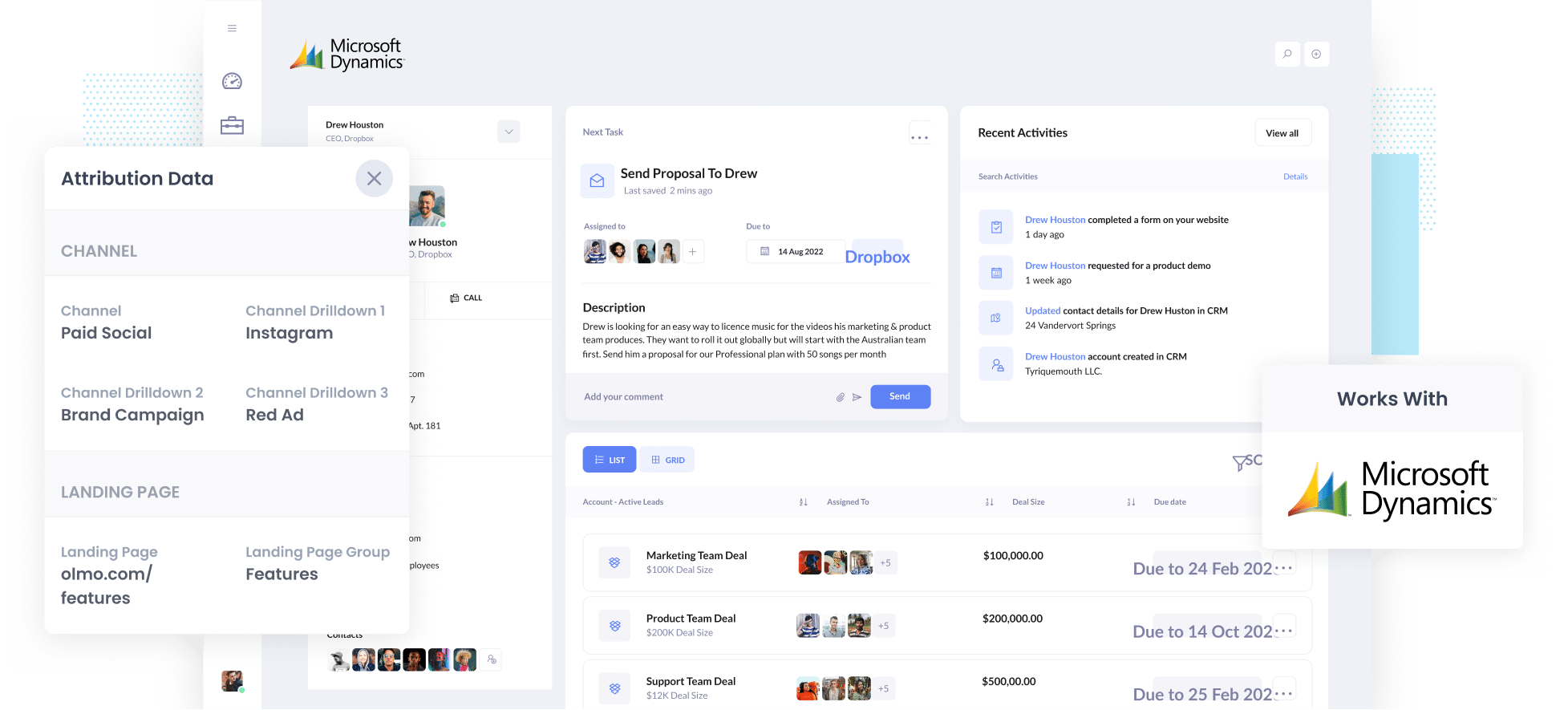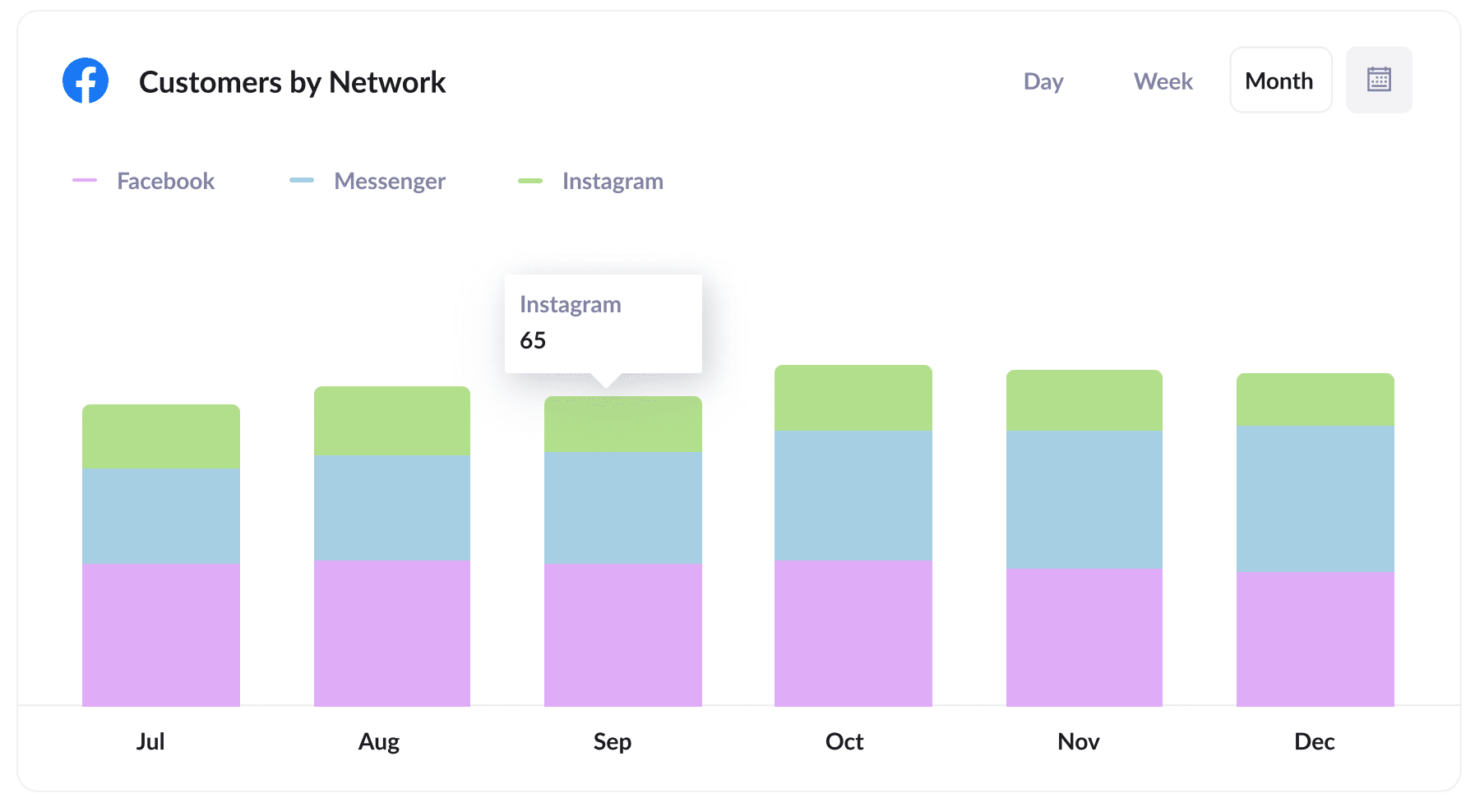4 steps to simply track Instagram Ads in Microsoft Dynamics
Want to know how many leads and customers you get from your Instagram Ads? In this post we'll show you how to track Instagram Ads in Dynamics.

Tools like Google Analytics are great for tracking how many visitors your website attracts from your ad campaigns, such as Instagram Ads.
Yet, if your aim is to better understand the return on investment (ROI) of your Instagram Ads, you need to understand which visitors convert into leads or customers.
In this article, we'll walk you through the process of using a tool named Attributer to understand the number of leads and customers your Instagram Ads generated. The best part? You can accomplish this in just four easy steps!
4 steps to track Instagram Ads in Microsoft Dynamics
Tracking how many leads and customers you get from Instagram Ads in Microsoft Dynamics is easy when you follow these 4 steps:
1. Add UTM parameters to your Instagram Ads

The first step is to include UTM parameters in your Instagram Ads.
Not familiar with UTM parameters? They're just additional bits of text attached to the end of the URL you share when directing individuals from your campaigns to your website.
For instance, if the webpage you're directing someone to is attributer.io/integrations/dynamics, your URL (with UTM parameters) might look like this:
attributer.io/integrations/activecampaign?utm_medium=paidsocial&utm_source=instagram&utm_campaign=brand-campaign
Now, you can structure UTM parameters however you like, but best practice for Instagram Ads is like this:
- UTM Medium = Paid social
- UTM Source = Instagram
- UTM Campaign = The name of your campaign
- UTM Term = The name of the ad set the ad belongs to
- UTM Content = The specific ad
Tagging URLs with UTM parameters is easy and there are free tools available on the web which can help you do it.
2. Install Attributer and add some hidden fields

Step two is to install Attributer on your website.
After you sign up for a free 14-day trial, we'll send you a piece of code to add to your website (instructions on how to add it can be found here).
After adding the code to your website, you need to include a number of hidden fields to your forms, these include:
- Channel
- Channel Drilldown 1
- Channel Drilldown 2
- Channel Drilldown 3
- Channel Drilldown 4
Attributer works with dozens of form builders (including Gravity Forms, Webflow Forms, Typeform and more). Depending on the form builder you use, it's simple to add hidden fields - step-by-step instructions for many of form builders are here.
3. Attributer transfers Instagram Ads data into hidden fields

Once everything is working, Attributer starts tracking the sources of your website's traffic, including those directed from your Instagram Ads.
Following this, it categorizes each visitor into distinct channels (like Paid Social, Paid Search, Organic Search, and more) and saves this information within a cookie stored in the visitor's web browser.
When a visitor completes a form on your website, Attributer automatically populates the hidden fields with the relevant details regarding their source.
4. Instagram Ads data is sent to Microsoft Dynamics

The last step involves capturing lead source information when a visitor completes a form on your website, in conjunction with their particulars like name and email, utilizing your form tool. All of this collected data can then be seamlessly transferred to Microsoft Dynamics.
Once this information is in Dynamics, you can use it for:
- Generating reports that offer insights into various aspects, such as the number of leads originating from your Instagram Ads, the conversion rate of these leads into customers, the total revenue generated, and more.
- Tailoring your sales approach when engaging with these new leads. For instance, if their source can be traced back to an Instagram ad highlighting a specific product or service, you can directly address this in your emails or conversations
What data gets captured in Microsoft Dynamics?
Each time a form is submitted on your website, Attributer will pass through the following information:
1. Marketing channel data
Attributer will supply details regarding the how a lead discovered your website.
Picture this scenario: You are a marketer working for a furniture company, and your current marketing focus is on running Instagram advertisements to showcase your new line of coffee tables.
If an individual were to click on one of these ads and subsequently complete a form on your website, the following information would be sent (based on the UTM parameters associated with your ads):
- Channel: Paid Social
- Channel Drilldown 1: Instagram
- Channel Drilldown 2: Coffee table campaign (or the specific campaign name)
- Channel Drilldown 3: Coastal coffee table ad (or whichever ad content they clicked on)
2. Landing page data
Attributer also sends data about the first landing page (for instance, coastalfurniture.com/blog/coffee-table-types) and the corresponding landing page category (/blog).
This capability allows you to track the quantity of leads originating from different content categories on your website, such as your blog. Consequently, you can understand which particular blog posts are generating the highest number of leads and revenue.
What is Attributer and why use it?
Attributer is a small code snippet that can be added to your website.
When people visit your website, Attributer tracks where they came from, like social media ads or search results, and saves this info in a browser cookie. If someone fills out a form on your site, Attributer uses this cookie data to fill in hidden form fields. You can then send this information to other tools you use, like CRM, email marketing, billing, and analytics.
Here's why Attributer is great for tracking Instagram Ads in Microsoft Dynamics:
- Captures other attribution information - As well as capturing the source of leads from your Instagram Ads, Attributer also captures information on leads who arrive on your site through other channels like Organic Search, Organic Social, Referral, or Direct. This means you can see where ALL your leads and customers are coming from, not just those from your Instagram Ads.
- Remembers the data - Unlike other tools, Attributer stores the UTM parameters in a cookie in the user’s browser, meaning that it doesn't matter which page the user completes a form on, the UTM parameters will always be passed through and you’ll have more accurate data on how many leads and customers you’re getting from your Instagram Ads.
- Cleans the data - Attributer was built to expect inconsistencies in UTM usage, such as using utm_source=instagram in some campaigns and utm_source=instagram.com in others. It would assign these leads to the correct channel (Paid Social in this case) regardless of these inconsistencies, again ensuring you have more accurate data.
3 reports you can run when you track your Instagram Ads in Microsoft Dynamics
Before launching Attributer, I led marketing and analytics teams at several companies for 15+ years.
Over the years, I've probably spent more than $1 million on ads on Instagram and a variety of other social networks. I've also run hundreds of reports to understand which campaigns were working best.
Here are several reports that I found the most useful:
1. Leads by channel

This graph shows you how many new potential customers you're receiving each month, grouping them based on where they first discovered you. This information helps you better understand where most of your customers come from and where you should focus to get even more.
Picture this: If the chart shows you that many customers discover you through regular search (like on Google), but you're spending a lot of money on ads on Instagram, it might be a good idea to think about altering your strategy.
2. Customers by network

If you're posting ads on Instagram, you most likely have ads on Facebook and other platforms as well.
This report helps by letting you know how many customers you get from each of the places you're displaying your ads. This info is important because it helps you decide where to use your money to generate the best results.
3. Revenue by campaign

This chart shows the profit earned from the various campaigns you're running on Instagram.
It's important because it shows you which campaigns are making more money than the spend, helping you to choose where to invest your budget to increase your return.
Wrap up
If you've been looking for a simple way to keep track of the number of leads and customers you're getting from your Instagram Ads, Attributer is an easy way to do it.
Using it means you can know exactly where each lead comes from, like the specific campaign, ad set, or ad they clicked on.
And guess what? It's free to begin using and takes only about 10 minutes to set up.
So start a free 14-day trial of Attributer today to see how it can help you!
Get Started For Free
Start your 14-day free trial of Attributer today!

About the Author
Aaron Beashel is the founder of Attributer and has over 15 years of experience in marketing & analytics. He is a recognized expert in the subject and has written articles for leading websites such as Hubspot, Zapier, Search Engine Journal, Buffer, Unbounce & more. Learn more about Aaron here.
